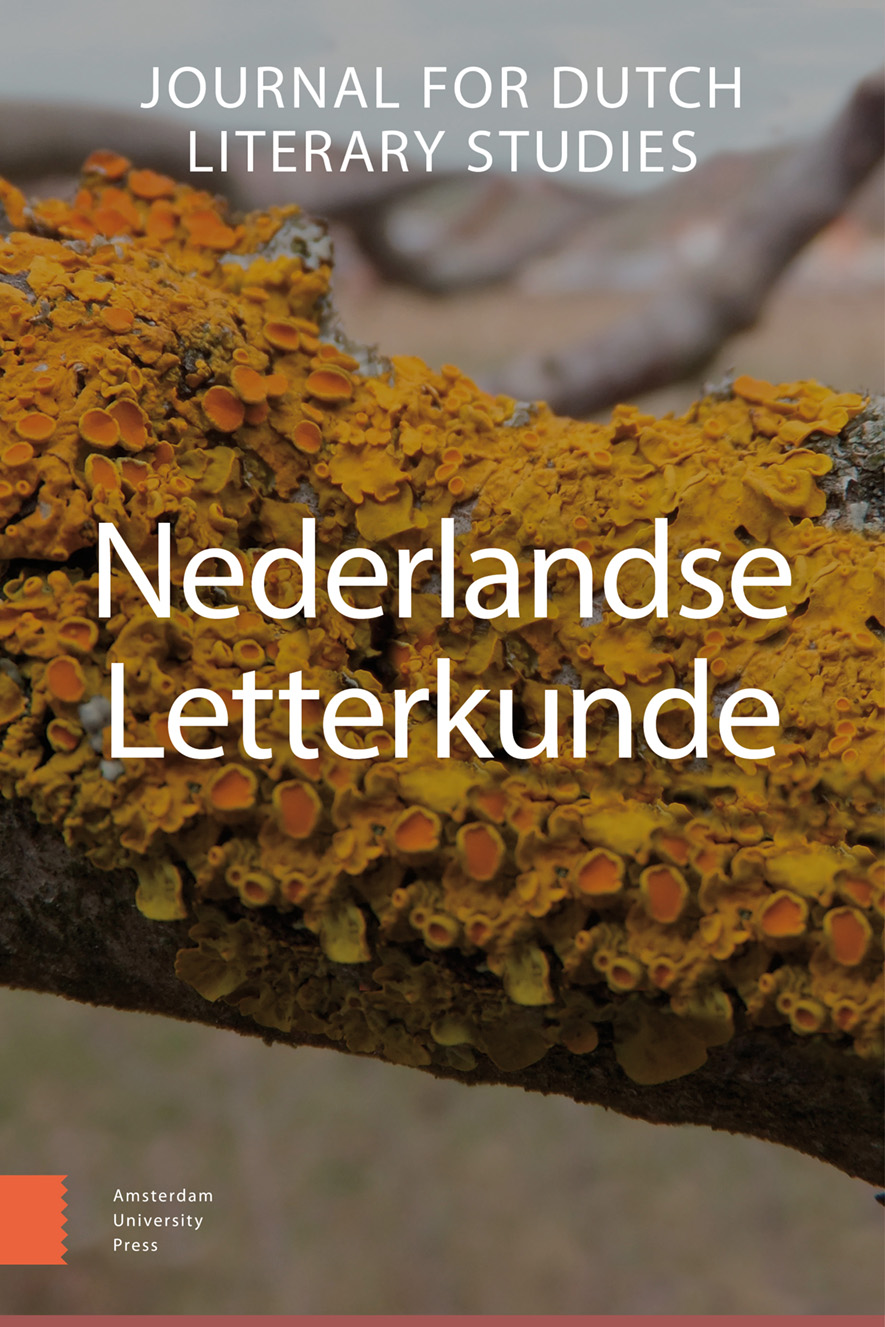- Home
- A-Z Publicaties
- Nederlandse Letterkunde
- Previous Issues
- Volume 15, Issue 1, 2010
Nederlandse Letterkunde - Volume 15, Issue 1, 2010
Volume 15, Issue 1, 2010
-
-
Walewein en Ysabele in Endi
Meer MinderDoor Zemel RoelThe Middle Dutch Roman van Walewein is ‘an acknowledged Arthurian masterpiece with few equals in any language’ (Norris Lacy). Striking to the work is that two authors wrote a large romance, in which the nephew of King Arthur is the only protagonist. This choice is something new in comparison with the works of the creator of the genre, Chrétien de Troyes. In his great adventure, that takes place in the Otherworld of Endi, the hero acts in transgression with the rules of the Arthurian romance. The same applies to Ysabele, the princess of Endi, whom Walewein falls in love with. The action of Walewein and Ysabele in Endi shows further a similarity with that of Guillaume and Orable in La Prise d’Orange. The authors of Walewein borrowed from this heroic poem, by which it resounds as a ‘conte en palimpseste’. The deconstruction, which is brought about by this palimpsest, has a poetical meaning. Penninc and Vostaert, the poets of Walewein, put at issue the problem of writing a romance about Arthur’s nephew. Such a project can only succeed, when the creator takes all freedom with regard to the rules of the genre.
-
-
-
‘Schryver van’ of burgerman? - Het afficheren van cultureel en sociaal kapitaal in Vlaamse negentiende-eeuwse romans
Meer MinderDoor Nele BemongIn this contribution I examine how Flemish nineteenth-century men of letters, and more specifically: historical novelists, presented themselves on the first textual ‘thresholds’ that readers encounter when they open a book, namely the title page and the dedication. These peritexts not only show how the novelists presented themselves to the outside world, i.e., the profile they wanted to create for themselves; they also provide insights into the social status and economic situation of the men of letters, since underlying motives frequently played a significant role in this respect. Moreover, an analysis of the aspect of self-presentation yields interesting data concerning the process by which the literary field became autonomous with respect to the field of the power. The results of this analysis, which takes the authors’ self-presentation to the reading public as its central perspective, corroborate the existing view that the literary field in Flanders only started to become autonomous with the Van Nu en Straks-movement. During the period between the 1830s and the 1880s, the relationship between authors on the one hand and political, social and ecclesiastical powers on the other was such that artistic freedom and autonomy were luxuries a Flemish author could hardly afford.
-
-
-
Postmodernisme en intertekstualiteit - Over beperkingen van de toepassing van al te postmoderne theorieën op postmoderne literatuur
Meer MinderThe perception of texts as being postmodern fiction can lead to a somewhat reductive and defensive reading of those texts. Especially with an eye on intertextual relations, the theoretical postmodern or deconstructive approaches seem to be the only acceptable instrument to understand the complex dynamics of the texts. As a following, the attention is drawn exclusively on the particularly dominant aspects of self-reflexivity. In this paper, I address the limitations of such a view and I present an alternative biased reading which focuses on the affirmative relations between text and intertexts.
-
Most Read This Month


